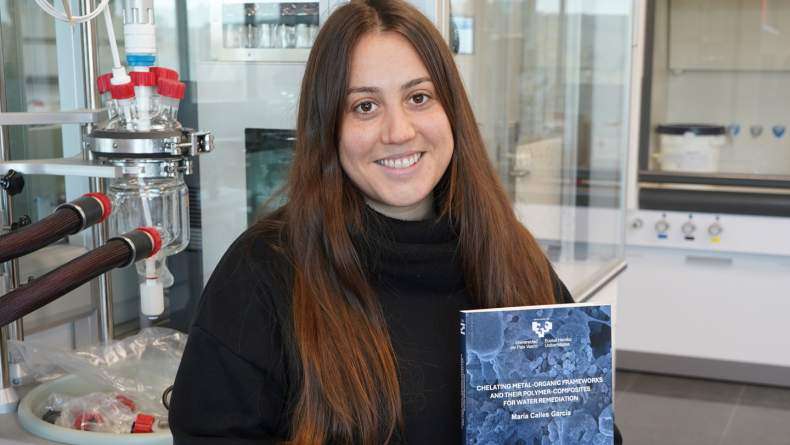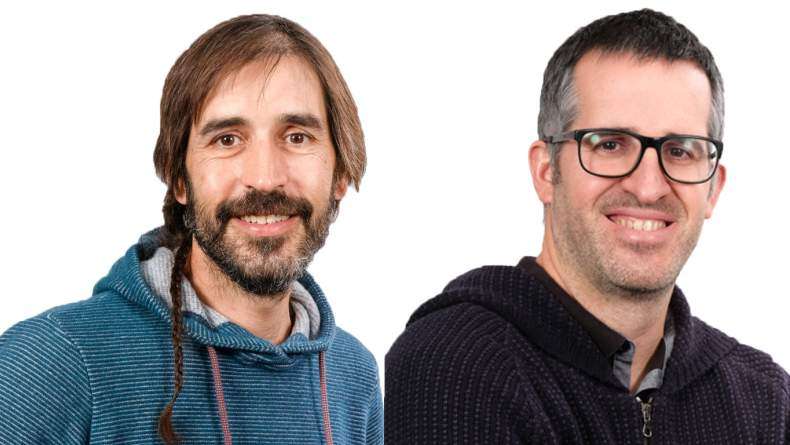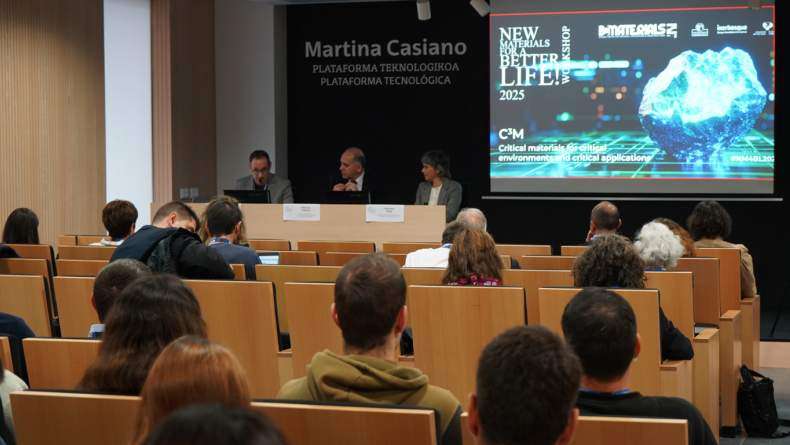BCMaterials Fortnightly Seminars #42

BEÑAT ARTETXE
(BCMaterials)
“SELF-ASSEMBLY OF LARGE LANTHANIDE-CONTAINING POLYOXOTUNGSTATES IN SOLUTION”
Polyoxometalates (POMs) are a well-known class of anionic metal-oxo clusters that show a wide range of applications due to their large variety in terms of size, structure and composition. The use of lacunary POM frameworks as multidentate O-donor ligands to incorporate 4f-metal centers in the inorganic skeleton represents a powerful tool to design new architectures with remarkable properties. The reaction of early lanthanides, GeO2, and Na2WO4 in a NaOAc buffer results in a series of 6 cation-directed crown-shaped POMs. The novel POMs have been characterized by elemental and thermal analyses, FT-IR spectroscopy and single-crystal X-ray diffraction. Their photoluminescent properties have also been studied. These macroanions dissociate in water into their central cores and external entities, as shown by ESI mass spectrometry. The former self-assemble into spherical, hollow, and single-layered blackberry type structures with radii of approximately 75 nm, as monitored by laser light scattering (LLS) techniques. Analogous studies performed in water/acetone mixtures show that macroions remain stable and form in turn their own type of blackberries with sizes that increase from approximately 20 to 50 nm with increasing acetone content. This control over both the composition and size of the vesicle-like assemblies is achieved for the first time by modifying the architecture of the species that undergoes supramolecular association through the solvent polarity.
ROBERTO FERNANDEZ
(BCMaterials)
3D TRIPLY INTERPENETRATED [{Cu2(Bpa)2(Tae)}+2 (NO3)22-]·nH2O (n=5, 3.5) CATIONIC MOF: DYNAMIC STRUCTURAL BEHAVIOUR.
The triply interpenetrated [{Cu2(Bpa)2(Tae)}+2 (NO3)22-]·5H2O ((1)·5H2O) and [{Cu2(Bpa)2(Tae)}+2 (NO3)22-]·3.5H2O ((1)·3.5H2O) compounds are constructed from three 3D interpenetrated frameworks. The main difference between both crystal structures is the role of the nitrate groups and the arrangement of the three dimensional interpenetrated nets. The loss of 1.5 H2O crystallization water molecules give rise to an anisotropic response the unit cell, and a rearrangement of the nitrate groups within the pores of the crystal structures. Despite we could not determine the crystal structure of the anhydrous compound, the pattern matching analysis of the powder pattern suggest an accentuation of the tendency observed by single crystal X-ray diffraction, with an increase of a 21% of the unit cell volume, compared with the initial value. The mechanism involving this expansion of the crystal frameworks will be discussed, and the thermal and spectroscopic properties of the initial material exposed. In addition, the CO2 adsorption capacity measurements at high pressures and the initial experiments on I2 adsorption from ethanolic solutions will be presented.
Related news
María Calles, New Doctor of BCMaterials
We would like to congratulate María Calles García for obtaining her PhDs in Materials Science and Technology from the UPV/EHU. On December 4 made a brilliant defense of her thesis titled ‘Chelating…Invited Talk with Barcelona Microelectronics Institute’s researchers (December 3)
On December 3 at 12:00 PM, in the Martina Casiano Auditorium in Leioa, BCMaterials will host senior researchers Antón Guimerà and Xavier Illa from the Barcelona Microelectronics Institute (IMB-CNM,…Invited Talk by Liu Yao on Lithium-Metal Batteries (December 2)
Next Monday, December 2, Liu Yao, professor at the Shanghai Institute of Applied Physics, will give an invited lecture at BCMaterials entitled ‘Li-Metal Batteries: From Liquid to Solid-State’. The…Success of BCMaterials’ Annual Workshop on Critical Materials
The 2025 edition of BCMaterials’ annual workshop gathered nearly one hundred participants on November 19 in Leioa to review the latest advances and discuss critical materials, their applications, and…



